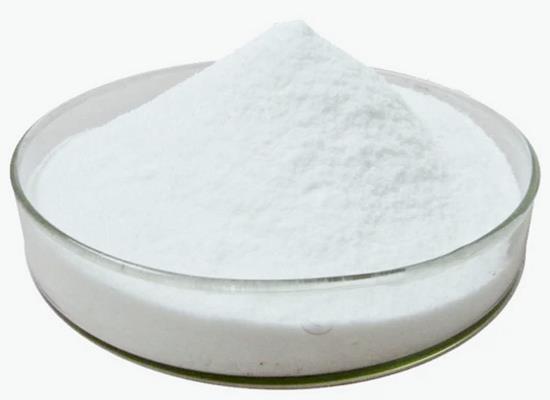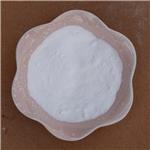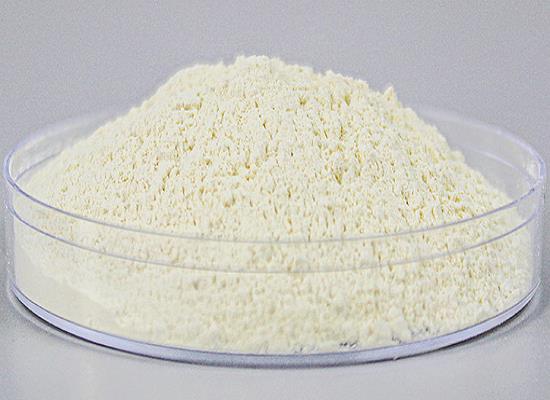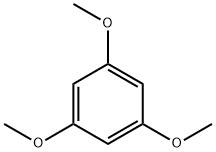1,3,5-Trimethoxybenzene: Role in Oxidation Reactions and its Biosynthesis Method
Sep 6,2024
General Description
1,3,5-Trimethoxybenzene, a significant organic compound, plays a crucial role in photochemical processes, particularly in the oxidation of alcohols like methanol, ethanol, and 2-propanol through its radical cation formed via one-electron oxidation. The hole transfer rates from its excited state to these alcohols showcase its efficiency in oxidation reactions. Additionally, 1,3,5-Trimethoxybenzene's biosynthesis from phloroglucinol involves multiple methylation steps catalyzed by specific O-methyltransferase enzymes, emphasizing 1,3,5-Trimethoxybenzene's importance in the floral scent of the Chinese rose, Rosa chinensis. This understanding of its radical chemistry and biosynthetic pathway opens avenues for future research in organic synthesis and catalysis.

Figure 1. 1,3,5-Trimethoxybenzene
Role in Oxidation Reactions
Introduction to 1,3,5-Trimethoxybenzene and its Radical Cation
1,3,5-Trimethoxybenzene is an important organic compound known for its involvement in various chemical processes, particularly in photochemical applications. Its radical cation, formed upon one-electron oxidation, plays a crucial role in the electron-transfer mechanisms observed in complex chemical environments. In studies involving two-color two-laser flash photolysis, 1,3,5-trimethoxybenzene is shown to undergo a bimolecular electron-transfer reaction, leading to the generation of 1,3,5-trimethoxybenzene radical cation. The ability to generate this radical cation in the excited state is pivotal for understanding its interactions with alcohols and its subsequent oxidation capacities. 1
Applications in Alcohol Oxidation
The application of 1,3,5-trimethoxybenzene extends significantly into the oxidation of various alcohols such as methanol, ethanol, and 2-propanol. Through the process of electron transfer, the radical cation of 1,3,5-trimethoxybenzene effectively interacts with these alcohols, resulting in measurable hole transfer rate constants. For instance, the rates of hole transfer from the excited state of 1,3,5-trimethoxybenzene to methanol, ethanol, and 2-propanol were determined to be (5.2 +/- 0.5) x 10(10), (1.4 +/- 0.3) x 10(11), and (3.2 +/- 0.6) x 10(11) M-1 s-1, respectively. This quantitative data highlights the efficiency of 1,3,5-trimethoxybenzene in facilitating oxidation and underscores its potential for applications in organic synthesis and catalysis. 1
Mechanism and Significance of 1,3,5-Trimethoxybenzene-Driven Reactions
The mechanistic pathways involving 1,3,5-trimethoxybenzene radical cation reveal significant insights into its functionality and versatility in chemical reactions. Following the one-electron oxidation process, the resulting hole transfer leads to the formation of alcohol radical cations and subsequently enables deprotonation, yielding new radical species such as TCQH. This reactivity is not only instrumental in synthesizing complex organic molecules but also demonstrates the vital role of 1,3,5-trimethoxybenzene in advancing our understanding of photochemical mechanisms, particularly regarding the interactions of radical cations with various substrates. Thus, 1,3,5-trimethoxybenzene stands out as a critical compound in the field of organic chemistry, paving the way for future explorations in radical chemistry and electron-transfer processes. 1
Biosynthesis Method
Biosynthesis from Phloroglucinol
1,3,5-Trimethoxybenzene is an important volatile compound associated with the fragrance of the Chinese rose, Rosa chinensis. The biosynthesis of 1,3,5-trimethoxybenzene begins with phloroglucinol, which serves as the primary substrate in this biosynthetic pathway. The process involves three sequential methylation reactions, each facilitated by specific O-methyltransferase enzymes. The first step is catalyzed by a novel enzyme known as phloroglucinol O-methyltransferase, or POMT, which methylates phloroglucinol to yield 3,5-dihydroxyanisole. Characterization of POMT has revealed its unique substrate specificity for phloroglucinol, which is crucial for the efficient production of 1,3,5-trimethoxybenzene. Understanding the role of POMT in the early stages of the biosynthesis pathway highlights its significance in determining the floral scent characteristics of Rosa chinensis. 2
Role in 1,3,5-Trimethoxybenzene Formation
Following the initial methylation by phloroglucinol O-methyltransferase, the biosynthesis of 1,3,5-trimethoxybenzene proceeds through two additional methylation steps. These subsequent reactions are catalyzed by previously identified orcinol O-methyltransferases, which further modify the intermediate 3,5-dihydroxyanisole. The isolated POMT enzyme, originally derived from rose petals, exhibited specificity for phloroglucinol, emphasizing its primary role in the formation of 1,3,5-trimethoxybenzene. The study also successfully expressed the full-length POMT complementary DNA in Escherichia coli, which allowed researchers to investigate the enzyme's functions and properties in detail. This focused investigation onto POMT and orcinol O-methyltransferases forms a robust framework for understanding the complete biosynthetic route to 1,3,5-trimethoxybenzene, illuminating the intricate enzymatic processes that contribute to the aromatic qualities found in the Chinese rose. 2
Reference
1. Cai X, Sakamoto M, Fujitsuka M, Majima T. One-electron oxidation of alcohols by the 1,3,5-trimethoxybenzene radical cation in the excited state during two-color two-laser flash photolysis. J Phys Chem A. 2007; 111(10): 1788-1791.
2. Wu S, Watanabe N, Mita S, et al. The key role of phloroglucinol O-methyltransferase in the biosynthesis of Rosa chinensis volatile 1,3,5-trimethoxybenzene. Plant Physiol. 2004; 135(1): 95-102.
- Related articles
- Related Qustion
Perampanel is used alone or together with other medicines to treat certain types of epilepsy, such as partial onset seizures and generalized tonic-clonic seizures.....
Nov 12,2024APIFerric pyrophosphate shows promise for anemia in chronic kidney disease patients on hemodialysis, but long-term safety and cardiovascular impacts require further research.....
Sep 6,2024API1,3,5-Trimethoxybenzene
621-23-8You may like
1,3,5-Trimethoxybenzene manufacturers
- 1,3,5-Trimethoxybenzene
-

- $29.00 / 1mL
- 2024-11-11
- CAS:621-23-8
- Min. Order:
- Purity: 99.57%
- Supply Ability: 10g
- 1,3,5-Trimethoxybenzene
-

- $0.00 / 1KG
- 2024-11-04
- CAS:621-23-8
- Min. Order: 1KG
- Purity: 99%
- Supply Ability: 500000kg
- 1,3,5-Trimethoxybenzene
-

- $10.00 / 25kg
- 2024-11-01
- CAS:621-23-8
- Min. Order: 1kg
- Purity: 99%
- Supply Ability: 100 TON






